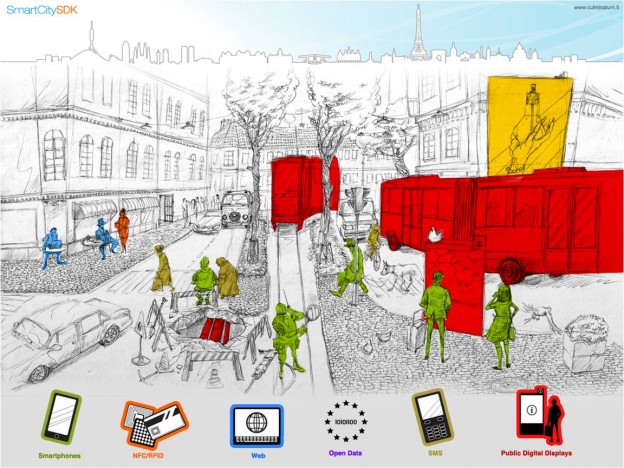I’m writing a new piece for Places on “interfaces to the smart city” — or points of human contact with the “urban operating system.” As I explained to the editors,
I’d like to consider these urban interfaces‘ IxD — with outputs including maps, data visualizations, photos, sounds, etc.; and inputs ranging from GUIs and touchscreens to voice and gestural interfaces — and how that interactive experience both reflects and informs urban dwellers’ relationships to their cities (and obfuscates some aspects of the city), and shapes their identities as urban “subjects.” I’m particularly interested in our single-minded focus on *screens*: are there other, non-”glowing rectangle” / “pictures under glass“-oriented platforms we can use to mediate our experiences of our cities?
Of course a large part of my work has been defining what constitutes an interface — and determining how one might critique it. My new spring Digital Archives studio includes an “interface critique” assignment, so this exercise of developing a critique methodology has served multiple purposes. For the class, I’ve asked my students to choose an “archival interface” and to examine:
- the site’s composition, organization, and aesthetics;
- how it structures the user’s experience and navigation, and how intuitive and “seamless” that interaction is;
- furthermore, how desirable would “seamless” interaction be in this instance (perhaps it would be helpful and instructive to show some seams?);
- how the site contextualizes the archival material (e.g., does it provide or link to robust metadata, does it “animate” the material?);
- how the site “hierarchizes” the presentation of information (e.g., does it allow users to “dig deeper” for more data if they want it?);
- the availability of documentation and help for users who want or need it.
Consider the needs of various user groups and user scenarios, and try to put yourself in their positions as you navigate through your site.
I’ve aimed to flesh out this rubric for the “urban interfaces” article. And I thought I’d try out some of those ideas here.

